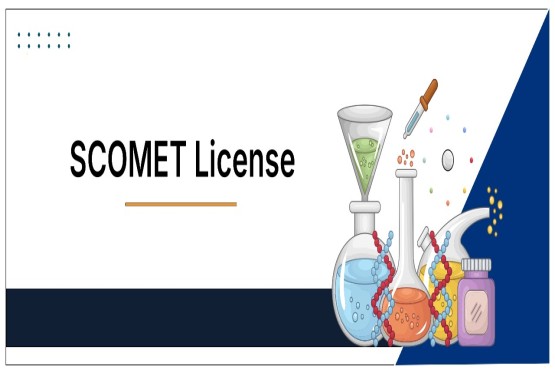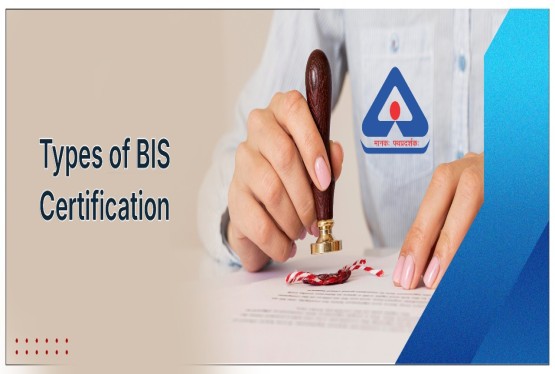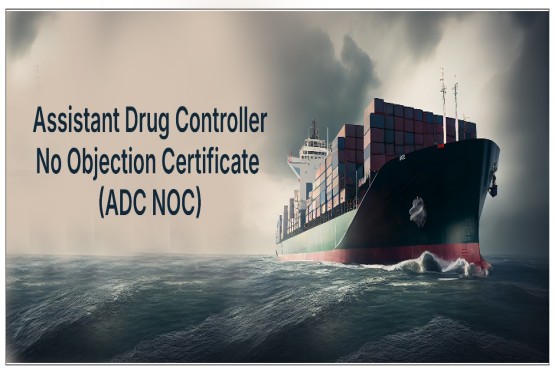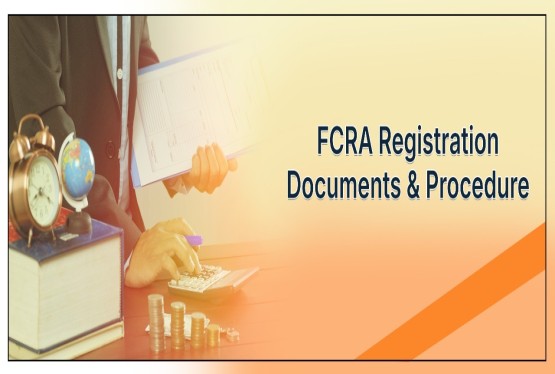When it comes to purchasing gold and silver jewellery, one of the biggest concerns for consumers is the purity of the metal. A piece of jewellery may look attractive and shiny, but unless it carries a hallmark, there’s no assurance about its actual gold or silver content. This is where Assaying and Hallmarking Centres (AHCs) play an important role in certifying and maintaining the purity of precious metals.
The Government of India, through the Bureau of Indian Standards (BIS), has made hallmarking mandatory for certain categories of jewellery to ensure transparency, authenticity, and consumer protection. Recognized AHCs serve as testing and certification facilities that confirm whether a precious article meets the standards set by BIS. Let us understand in detail what AHCs are, why they are important, the procedure for their recognition, exceptions, and the regulations related to On-Site Centres (OSCs).
What is an Assaying and Hallmarking Centre?
An Assaying and Hallmarking Centre is a certified facility that is authorized by the Bureau of Indian Standards (BIS) to test and hallmark jewellery items made of gold and silver. These centres are responsible for checking the purity of the metal used in the jewellery and ensuring that it complies with the prescribed standards before assigning a hallmark.
The process involves using modern testing methods such as fire assay and X-ray fluorescence (XRF) to determine the caratage or purity of gold (14K, 18K, 22K) and silver (six grades). Once verified, the article is marked with a hallmark which acts as an official stamp of quality.
Only after a jewellery piece is tested and approved by an AHC can it be certified as authentic and pure. These centres provide crucial support to the hallmarking process and contribute to the integrity of the precious metal industry in India.
Why Are Assaying and Hallmarking Centres (AHCs) Important?
The primary purpose of Assaying and Hallmarking Centres is to protect consumers from being cheated or misled about the purity of the jewellery they purchase. By ensuring that the gold or silver in the article is of the stated purity, AHCs provide a guarantee of authenticity and value.
When a jeweller submits a piece for hallmarking, the article is registered with a timestamp at the AHC. The process includes receiving the article, conducting necessary tests, certifying its purity, and dispatching it back to the jeweller with the hallmark. This complete tracking system adds transparency and accountability to the process.
In addition, AHCs help jewellers build trust with their customers by delivering certified and BIS-compliant products. This strengthens the overall jewellery market and ensures fair trade practices.
Jewellery Articles Exempted from Testing at AHCs
Not all jewellery pieces are required to be tested or hallmarked. There are certain exemptions provided by BIS under specific circumstances. The following categories of jewellery are exempted from testing at Assaying and Hallmarking Centres:
1. Articles Weighing Less Than 2 Grams: Small jewellery items under 2 grams in weight are not required to be hallmarked.
2. Items Intended for Export: Articles made for export that meet the specifications of foreign buyers are exempt.
3. Traditional Jewellery Techniques: Jewellery made using traditional techniques such as Polki, Jadaau, and Kundan does not require hallmarking.
4. Jewellers with Low Annual Turnover: Jewellers whose total annual turnover is below Rs.40 lakhs are exempt from the mandatory hallmarking requirement.
These exemptions aim to support small-scale jewellers and preserve traditional craftsmanship while maintaining consumer trust.
Documents Required for Recognition of Assaying and Hallmarking Centres
To get officially recognized by the BIS as an Assaying and Hallmarking Centre, the applicant must submit specific documents that establish the legitimacy and preparedness of the facility. These documents include:
1. Proof of Establishment of the Firm or Company
• For Companies: Certificate of Incorporation issued by the Registrar of Companies, along with the Memorandum of Association (MoA).
• For Partnership Firms: A registered partnership deed.
• For Proprietorship Firms: An original certificate issued by a Chartered Accountant.
2. Address Proof of the Firm
Any one of the following documents can be submitted:
• Income Tax Assessment Order
• GST Registration Certificate
• Sale or Lease Deed Agreement
• Trade License or Registration with State Government Authority
• Property Tax Receipt
• Rent Agreement
3. Identity Proof of the Applicant
Any one of the following is acceptable:
• Aadhar Card (with e-signature or Aadhar-based verification)
• Driving License
• Voter ID
• Passport
• PAN Card
• Photo ID certified by a Gazetted Officer
4. Map Location
A detailed map showing the location of the premises with respect to the nearest landmark.
5. Affidavit-cum-Undertaking
An affidavit confirming compliance with BIS norms and a formal undertaking as per the BIS format.
6. Quality Manual
A quality manual of the AHC prepared based on the standard format provided by BIS. This manual outlines procedures, equipment, personnel responsibilities, and safety norms followed at the centre.
Procedure for Obtaining Recognition for Assaying and Hallmarking Centres (AHCs)
The process for obtaining official recognition as an Assaying and Hallmarking Centre from BIS involves the following steps:
1. Filing an Online Application: The applicant must fill out and submit the online form along with all required documents.
2. Document Verification: Once submitted, the documents are reviewed by BIS officials to ensure that all information is complete and accurate.
3. Inspection by BIS: The BIS conducts an on-site inspection of the premises to verify infrastructure, manpower, equipment, and adherence to guidelines.
4. Approval and Grant of Recognition: If BIS is satisfied with the documents and inspection results, the applicant is granted formal recognition as a certified AHC.
Recognition enables the centre to begin official assaying and hallmarking operations under the supervision of BIS.
Conditions for Rejection of AHC Recognition Application
An application for recognition may be rejected under specific circumstances to maintain the integrity of the hallmarking system. The following are the main reasons for rejection:
1. Misuse or Violation of BIS Act: If the applicant has previously misused the hallmark or violated the provisions under Section 14 or 15 of the BIS Act, 2016.
2. Pending Prosecution: If any prosecution case is pending against the applicant under Section 29 of the BIS Act or if a new case is about to be initiated.
3. Conviction Clause: If convicted under Section 29 of the BIS Act, the applicant or firm is not allowed to apply for recognition for a period of one year from the date of conviction.
Applicants must ensure a clean compliance history before applying to avoid disqualification.
Guidelines for Setting Up On-Site Centres (OSC) by AHCs
Recognized AHCs are allowed to set up On-Site Centres (OSCs) under specific rules and conditions issued by the BIS. These OSCs help expand hallmarking services in districts where no AHCs are available.
Limitations on Number and Distance
• An AHC can establish up to five OSCs.
• The maximum distance between the OSC and the parent AHC should not exceed 100 kilometers.
• If an AHC handles 500 or more articles daily, it must set up an OSC or a new AHC in a district that currently lacks one.
Facilities and Responsibilities
• OSCs must have all required facilities of an AHC except for fire assay equipment.
• Articles received at the OSC must be sent to the parent AHC for fire assay.
• The parent AHC is responsible for the testing quality and results of all articles processed at OSCs.
Application and Approval Process
• AHCs must apply to the BIS Regional Office for permission to set up an OSC.
• The application must include details such as the sample dispatch method, receipt of assay reports, and a map of the proposed OSC location.
• The Regional BIS Office verifies infrastructure, manpower, and past performance.
• Audits are conducted at both the parent AHC and the proposed OSC.
• Applications are processed within three working days of receiving the audit report, subject to all conditions being fulfilled.
Personnel and Jurisdiction
• The OSC must appoint testing staff and a Quality Manager, similar to the parent AHC (excluding fire assay staff).
• If the OSC is in a different region, the application must be filed with the BIS Regional Office that has jurisdiction over the OSC’s location.
Equipment Requirements
• All required testing equipment must be present at the OSC, except those used for fire assay.
Suspension and Termination
• BIS may suspend or cancel the OSC’s recognition if it fails to comply with guidelines.
• The parent AHC is given a chance to explain before recognition is withdrawn.
• If the parent AHC loses its recognition, all OSC operations are also terminated automatically.
Fees and Reports
• No application or recognition fee is charged for OSCs.
• The parent AHC must include OSC-specific details in all BIS reports and returns.
• OSC recognition is automatically renewed when the parent AHC’s recognition is renewed.
Conclusion
Assaying and Hallmarking Centres serve as the backbone of India's hallmarking system, ensuring the purity and authenticity of gold and silver jewellery. With strict guidelines set by the BIS and the support of On-Site Centres, the system aims to bring transparency, trust, and standardization to the jewellery industry. Whether you are a jeweller seeking recognition or a consumer looking to verify quality, knowing the role of AHCs helps in making informed and secure decisions.
If you have any queries regarding Assaying and Hallmarking Centres, then you can connect with BIS Experts in the Compliance Calendar through mail info@ccoffice.in or Call/Whatsapp at +91 9988424211.
FAQs
Q1. What is the role of an Assaying and Hallmarking Centre (AHC)?
Ans. An Assaying and Hallmarking Centre (AHC) tests the purity of gold and silver articles and certifies them with a hallmark. It ensures that the metal used in jewellery matches the claimed caratage or fineness. These centres are authorized by the Bureau of Indian Standards (BIS) and follow strict testing protocols to maintain the quality and trust of precious metal products in the Indian market.
Q2. Who can apply for recognition as an AHC in India?
Ans. Any legally established entity—whether a company, partnership firm, or proprietorship—having the required infrastructure, equipment, and manpower can apply for recognition as an AHC. The applicant must submit specific documents such as proof of establishment, address proof, identity proof, quality manual, and affidavit-cum-undertaking, and must comply with BIS guidelines.
Q3. Are all jewellery items required to be hallmarked?
Ans. No, there are certain exemptions. Jewellery weighing less than 2 grams, items made for export (meeting foreign standards), traditional jewellery like Polki, Kundan, and Jadaau, and jewellery sold by jewellers with an annual turnover of less than Rs.40 lakhs are exempt from mandatory hallmarking by AHCs.
Q4. How many On-Site Centres (OSCs) can an AHC set up?
Ans. An AHC can set up a maximum of five On-Site Centres (OSCs), and each OSC must be located within a 100 km radius from the parent AHC. These centres must meet BIS-specified infrastructure and staffing requirements, except for fire assay facilities, which remain the responsibility of the parent AHC.
Q5. Can an application for AHC recognition be rejected?
Ans. Yes, BIS may reject an AHC recognition application if the applicant has previously misused the hallmark, violated provisions under the BIS Act (Sections 14, 15), or is involved in a prosecution case under Section 29 of the Act. Also, applicants convicted under Section 29 are barred from applying for recognition for one year from the date of conviction.
Q6. What is the procedure for obtaining BIS recognition for an AHC?
Ans. The procedure includes filing an online application with all required documents, undergoing document verification and site inspection by BIS officials, and complying with infrastructure and quality standards. If all conditions are met, BIS grants official recognition, allowing the centre to begin assaying and hallmarking operations.
Q7. Is there any fee for setting up an On-Site Centre (OSC)?
Ans. No, there is no application or recognition fee required for setting up an On-Site Centre (OSC). However, all operational responsibilities, including compliance, testing accuracy, and reporting, rest with the parent AHC. The recognition of an OSC is automatically renewed when the parent AHC’s recognition is renewed.












































































_crop10_thumb.jpg)







_Rules,_2025_learn_crop10_thumb.jpg)























































































_crop10_thumb.jpg)








 in BIS FMCS_learn_crop10_thumb.jpg)










_crop10_thumb.jpg)





